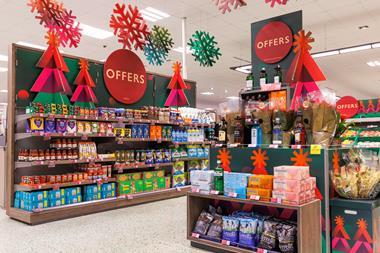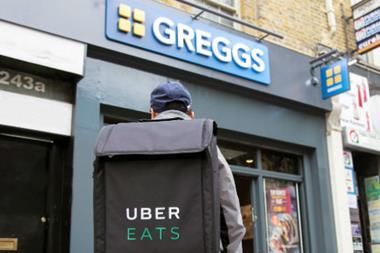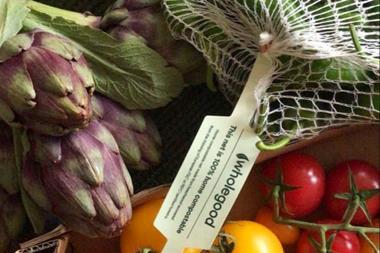The multiple multiplies
With expansion plans coming to fruition much faster than anticipated, Waitrose distribution director Geoff Salt is having to cope with an unexpected increase in volume, as Nicola Gordon-Seymour discovers
With the acquisition of 11 Somerfield stores, Waitrose is having to cope with the challenges of rapid expansion much earlier than anticipated.
The multiple usually opens up to six new branches a year, but the Somerfield acquisition has brought this number up to 17, stretching its distribution system to the limits.
Distribution director Geoff Salt admits a great deal has to be done to cope with the significant increase in product volume brought by the acquisition.
"A period of assessment is taking place to judge exactly how much our existing facilities can cope with and what our current distribution strategy can support," he says.
The evaluation "project" is due for completion in the summer, when the nitty gritty will be ironed out.
But Salt is already aware of one crucial obstacle to the expansion of its regional distribution centres in Bracknell and Brinklow people.
He says: "Our regional distribution centres are in two areas of very low unemployment, so getting the staff could pose a problem. The idea is to formulate our strategy for the next five years."
Waitrose has a very efficient distribution system. The two main RDCs in Bracknell, managed by the multiple, and Brinklow, managed by Hays Logistics supply all branches with ambient, fruit and vegetable and chilled lines, with a 55% split in favour of Bracknell. Other products, such as alcohol and patisserie lines, are consolidated and transported to the RDCs by contractors. Each branch typically receives between two and eight deliveries on a daily basis with challenging punctuality targets.
The Bracknell site is also one of the largest RDCs in the UK, handling about 1.4 million cases a week. This is set to rise to 1.75 million by November.
"This alone will be quite a challenge for us," Salt says. The way forward is not entirely clear, but Salt is certain it will involve more contracts with outside consolidators in combination with Waitrose owned RDCs.
Salt says there are two advantages to this system: "It gives us a great opportunity to benchmark our business against what the specialist contractor is doing. Plus it gives us the opportunity to concentrate on what we are good at retailing leaving the experts to deal with the logistics while learning from them at the same time."
One key area being tackled by the retailer and Hays is the issue of backhauling with the aim of reducing road haulage.
Waitrose attempts to optimise the use of its lorries to prevent half empty or empty loads trailing the country, but the issue is not as black and white as that.
"The problem we have is our very tight lead times," Salt says. "Our philosophy is to deliver little and often, which means the lorries are not always full. Each load is timed and has to maintain its timed slots in order to meet our service targets."
However, Salt has set up a transport matrix exercise to assemble a strategy for minimising the transportation of half-full loads.
He says: "We do have one thing in our favour: our lorries are multi-temperature and can cope with virtually any load."
Waitrose is spending more than ever on technological developments and, in the past 18 months, has extended its warehouses at both RDCs and introduced radio dating terminals into its ambient picking operations.
"The critical thing about the supply chain in food retailing is that it has to happen just like that there's no time for bottlenecks. So we are constantly looking for ways to use technology to do things faster and optimise output."
But for Salt the priorities remain recruiting quality staff and adapting resources to the growing business while maintaining an efficient full-capacity distribution system.
"The more efficient I make the operation, the more I'm doing for our bottom line," he adds.
E-commerce and geographical spread will also pose distribution challenges in the future and plans are being mapped out.
"Our supply chain has vastly improved in the past few years," says Salt.
"Over 90% of chilled lines go into our branches every day. The proportion of sales that comes from our fresh food is the highest in food retailing."
The slick operation that is Waitrose can only be attributed to the partnership ethos that nurtures its employees and provides them with a vested interested in the company. There really is no accounting for accountability.
{{Z SUPPLEMENTS }}
Close menu
- Home
- Retail & Wholesale
-
Products & Suppliers
- Back to parent navigation item
- Products & Suppliers
-
Product Categories:
- Back to parent navigation item
- Product Categories:
- Alcoholic drinks
- Bakery
- Cereals & breakfast
- Cheese
- Chicken & poultry
- Chocolate
- Confectionery
- Crisps, nuts & snacks
- Dairy
- Fish
- Fresh produce
- Frozen
- Household
- Meat
- Own Label
- Sauces & condiments
- Seasonal
- Soft drinks
- Vaping
- Vegan & plant-based
- World foods
- Suppliers
- People
- Reports & Data
-
Topics A-Z
- Back to parent navigation item
- Topics A-Z
-
Popular topics:
- Back to parent navigation item
- Popular topics:
- Cost of living crisis
- Crime
- Deposit Return Schemes
- Finance
- Government & Regulation
- Health
- Inflation
- Loyalty
- Marketing
- Mergers & Acquisitions
- New Product Development
- Sourcing
- Supply chain
- Sustainability & environment
- Technology
- Ultra Processed Foods
- Vaping
- A-Z all topics
- Content by type:
- Events
- Subscribe now
Sign in to comment on this article
Not logged in before? Register for FREE guest access today.
You will be able to:
- Read more stories
- Receive daily newsletters
- Comment on stories
Advert


















No comments yet